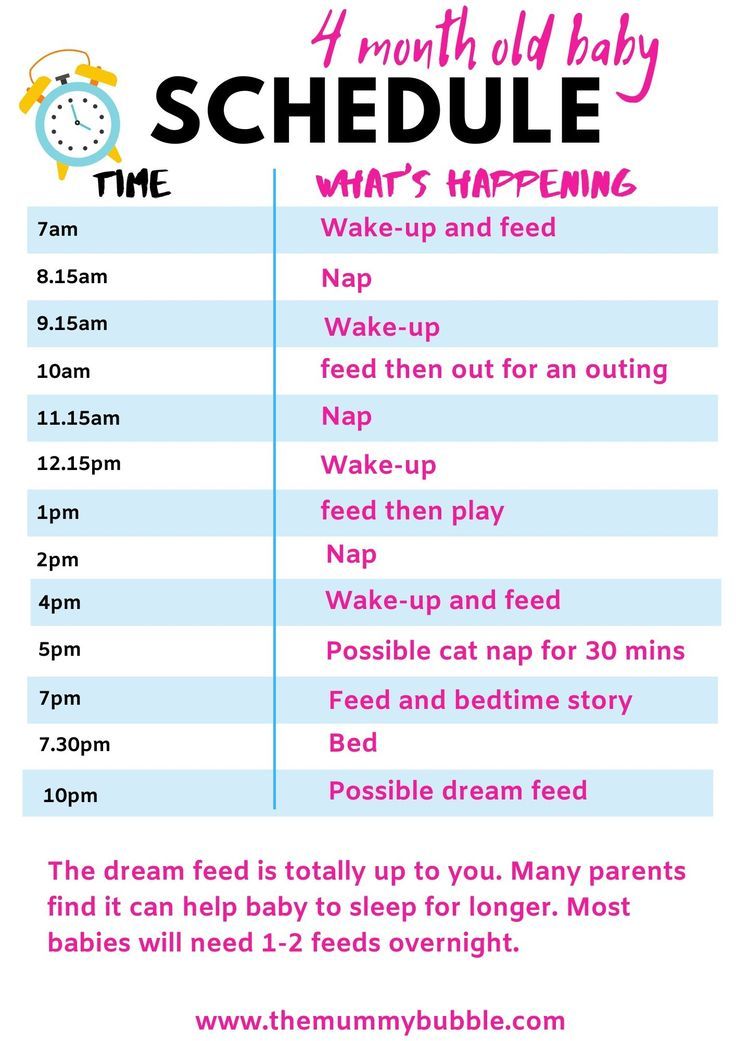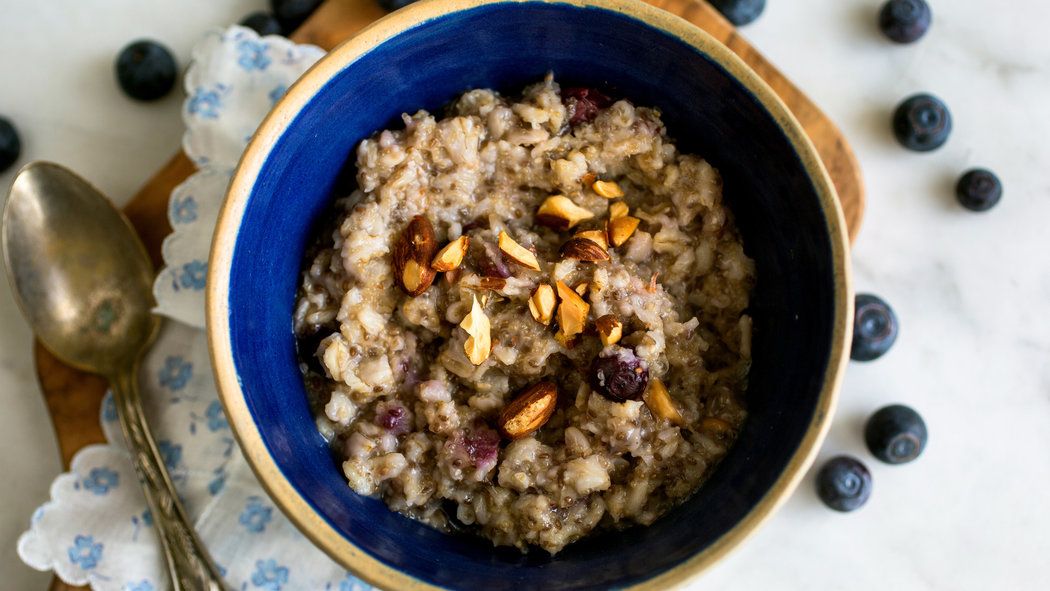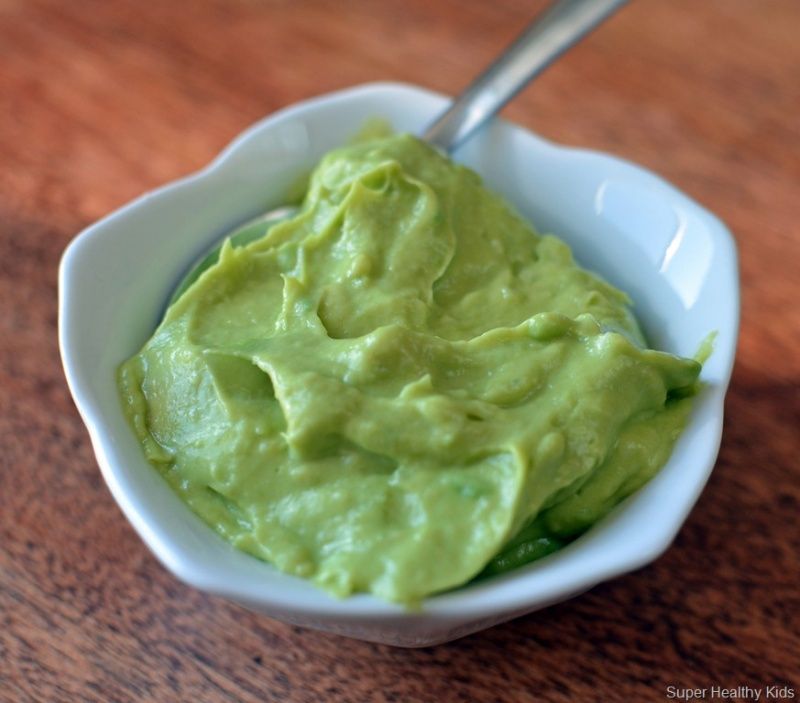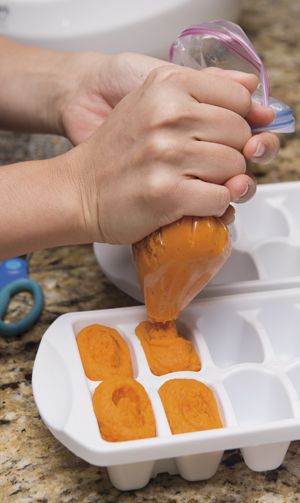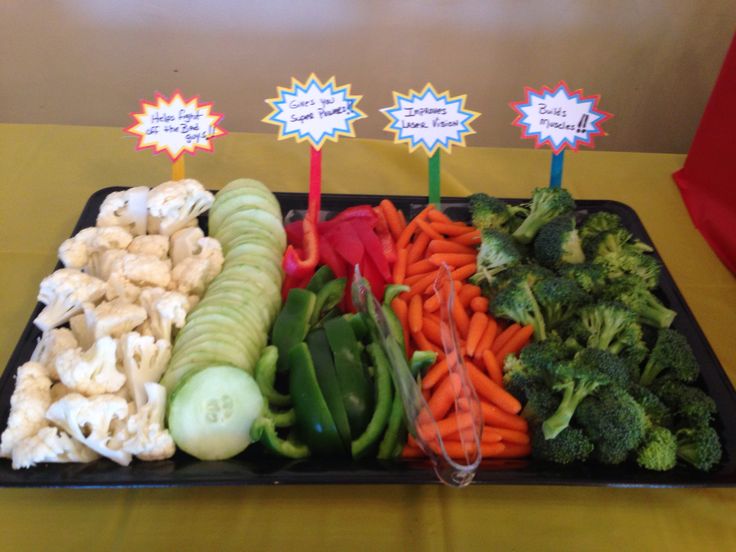Feeding chart for 8 months baby
Meal Plan For an 8-Month-Old Baby: Feeding Schedule and Tips
What are the best foods for an 8-month-old baby?
A wholesome and healthy diet that contains the correct quantity of protein, carbohydrates, minerals, and vitamins is crucial for the growth of your baby. A correct mix of all these nutrients is found in a wide variety of food items.
A menu for an 8-month-old baby should include the following foods:
- Fruits — Fresh fruits form a vital source of a wide variety of minerals, vitamins, and other types of micronutrients. Fruits cut into cubes and cooked until soft make excellent finger foods for babies of this age. Please remember to use fruits that grow in your region or at least are very widespread. That will help lower the risk of an allergic reaction.
- Vegetables — At this age, your baby may shift from eating mashed vegetables to chewing small pieces of steamed vegetables. Soft cooked vegetables also make excellent finger foods for babies.
As with fruits, to reduce the chance of an allergic reaction, don’t try anything exotic.
- Fish — You can also introduce fish to an eight-month-old baby. Fish such as salmon and tuna is a rich source of omega-3 fatty acids and is excellent for the development of the brain and growth of babies. You can offer fish as a soup or as a puree to your baby.
- Dairy — Yogurt and cheese made from pasteurized milk are excellent sources of calcium for eight-month-old babies. You can include cottage cheese, cheddar, jack, and colby cheese. Soft cheeses including blue cheese and brie can pose a health risk, so hold off on these for now.
- Protein — You can include various foods that are rich in protein for an eight-month-old’s diet. Some protein-rich foods include legumes, beans, beef, egg yolks, chicken, fish, tofu, turkey, and pork. You can cook these foods and puree them or chop them into small pieces.
- Cereals and grains — You can mix together some of the cereals that your eight-month-old baby is already eating without producing a reaction.
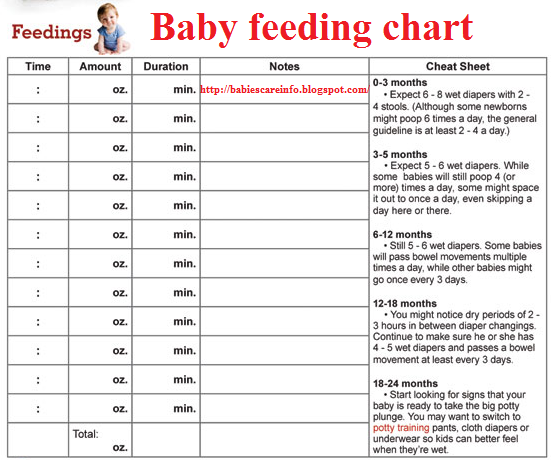 You can also introduce muffins and bread into the meal plan for your eight-month-old after your baby is able to enjoy foods with more texture. Pasta mixed with cheese is a popular favorite for babies of this age. The seeds and grains that you can include in your eight-month-old’s menu are amaranth, quinoa, rice, oats, wheat, sesame, spelt, barley, buckwheat, and millet.
You can also introduce muffins and bread into the meal plan for your eight-month-old after your baby is able to enjoy foods with more texture. Pasta mixed with cheese is a popular favorite for babies of this age. The seeds and grains that you can include in your eight-month-old’s menu are amaranth, quinoa, rice, oats, wheat, sesame, spelt, barley, buckwheat, and millet.
Take a quiz
Find out what you can do with our Health Assistant
8-month-olds feeding schedule
Making a feeding schedule for your eight-month-old baby is very personal. You will get familiar with your child’s cues gradually and can start to develop a schedule of sleeping, playing, and eating that meets the needs of your whole family. While creating an 8-month-old’s feeding schedule, remember that most babies this age need the following:
- Solid foods at least twice or three times a day along with 25 to 32 ounces of formula or breast milk every 24 hours. You can start increasing the quantity and variety of the foods in your 8-month-old baby’s diet.
 You can also try introducing a sippy cup and finger foods.
You can also try introducing a sippy cup and finger foods. - About 13 to 14 hours of sleep every 24 hours (including naps and overnight). Babies at this age often take two naps during the day — one in the morning and the other in the afternoon.
- Social interaction with their primary caregivers lets children play and work on developing new skills.
Sample meal plan for an 8-month-old
Preparing an 8-month-old’s meal plan may become more challenging as your child begins eating solid foods.
A sample meal plan for an eight-month-old baby is as follows:
Breakfast
- Mashed egg or cereal: ¼ to ½ cup
- Diced fruit: ¼ to ½ cup
- Breast milk or formula: 4 to 6 ounces
Snack
- Breast milk, formula, or water: 4 to 6 ounces
- Cooked vegetables or diced cheese: ¼ cup
Lunch
- Meat, cottage cheese, or yogurt: ¼ to ½ cup
- Orange or yellow vegetables: ¼ to ½ cup
- Breast milk or formula: 4 to 6 ounces
Snack
- One whole-grain cracker or teething biscuit
- Diced fruit or yogurt: ¼ cup
Dinner
- Diced tofu or meat: ¼ cup
- Green vegetables: ¼ to ½ cup
- Potato, rice, pasta, or noodles: ¼ cup
- Fruit: ¼ cup
- Breast milk or formula: 4 to 6 ounces
Before bedtime
- Water, breast milk, or formula: 6 to 8 ounces (if you are giving your child breast milk or formula before bed, it’s a good idea to also give them water afterwards)
Eight feeding tips for an 8-month-old baby
Here are few tips to keep in mind while feeding your 8-month-old baby.
1. Don’t forget the breast milk or formula
At eight months, your child needs about 750 to 900 calories per day, from which 400 to 500 calories should come from formula or breast milk (approximately 720 ml or 24 ounces per day). They no longer need the calories from breastfeeding or formula once they turn one.
2. Stick to one feeding position and location
While feeding your baby, it’s best to try to stick to one feeding position and location. This helps develop a strong relationship between the place and the food. High chairs not only make mealtimes trouble free, but they are also excellent at teaching your child how to sit still while eating. They also help minimize choking hazards and keep food mess more or less isolated.
3. Don’t mash the food completely
Another thing to keep in mind while preparing food for an eight-month-old baby is not to mash the food completely. Instead keep the consistency somewhat grainy. This can help your baby transition from pureed foods to solid foods more easily.
4. Don’t add salt or sugar yet
Salt and sugar can put unnecessary load on babies’ kidneys. Furthermore, eating too much salt during childhood has been shown to lead to higher risks of diseases such as hypertension, kidney disease, osteoporosis, and cardiovascular diseases later in life. Similarly, adding sugar to your baby’s diet can lead to tooth decay and cavities. Excessive sugar intake may also suppress immunity and make children more prone to developing diabetes, obesity, and cardiovascular diseases in adulthood.
5. Try to avoid plastic
If possible, store foods for your baby in containers made of glass or steel. Plastic sometimes contains harmful chemicals that can contaminate the food.
6. Avoid fried foods
Swap fried foods for steamed vegetables and fruits.
7. Be careful about allergies
When you are introducing new foods into an 8-month-old’s meal plan, make sure to introduce them one at a time, by themselves. This will help you identify any food allergies. Health experts recommend that you wait at least four days between introducing new foods.
Health experts recommend that you wait at least four days between introducing new foods.
As you introduce new foods, look for possible allergic reactions such as hives, difficulty breathing, or rashes. If there is a family history of food allergies, particularly for eggs, nuts, and dairy products, exercise extra caution.
8. Don’t use cow milk yet
Cow milk doesn’t contain the essential nutrition that your baby needs at this age, so wait until they turn one before introducing it. Cow milk contains more salt, protein, calcium, and potassium than formula or breast milk. This can raise the load on babies’ kidneys.
By eight months, your baby is probably able to easily swallow mashed foods and beginning to chew soft and cooked solid foods. However, they’re still getting at least half their calories from formula or breast milk. The best foods for an eight-month-old baby are fruits, vegetables, fish, dairy, chicken, eggs, cereals, and grains.
Try to arrange the feeding schedule of your eight-month-old baby according to their personal needs and those of your family. While preparing an 8-month-old baby’s meal, don’t mash the food completely. Avoid salt and sugar, and try to store leftovers in glass or steel. Be careful about food allergies, and don’t introduce cow milk until your child is one year old.
While preparing an 8-month-old baby’s meal, don’t mash the food completely. Avoid salt and sugar, and try to store leftovers in glass or steel. Be careful about food allergies, and don’t introduce cow milk until your child is one year old.
Baby formula feeding chart: How much formula by weight and age
Is your baby getting too much or too little formula? It's an important question that worries many new parents, especially those with newborns. When deciding how much formula to give your baby, it's important to watch their hunger cues as well as looking at guidelines based on age and weight. In general, before they're eating solids, babies need 2.5 ounces of formula per pound of body weight each day.
These guidelines are for babies who are exclusively formula-fed for the first 4 to 6 months, and then fed a combination of formula and solids up to age 1. If your baby is getting a combination of breast milk and formula, talk to their doctor for separate advice.
Your pediatrician can tell you where your baby falls on the growth charts, make sure they're growing steadily on their own growth curve, and help you ensure that they're getting a healthy amount of formula. If you're ever worried about your baby's growth, behavior, or development, talk with their doctor.
If you're ever worried about your baby's growth, behavior, or development, talk with their doctor.
How much formula for a newborn
For the first few days, offer your newborn 1 to 2 ounces of formula every 2 or 3 hours. (At first, newborns may only take a half ounce of formula at a time.)
After the first few days, give your newborn 2 to 3 ounces of formula every 3 to 4 hours.
Initially it's best to feed your formula-fed newborn on demand, whenever they show signs that they're hungry. Because your little one can't tell you when they want a bottle, you'll need to learn to read their hunger cues. Crying is often a late sign of hunger, so if you can, try to catch the earlier signs that it's time for a feeding.
Here are some hunger cues to watch for:
- Smacking or licking their lips
- Rooting (moving their jaw, mouth, or head in search of food)
- Putting their hands to their mouth
- Opening their mouth
- Fussiness
- Sucking on things
- Becoming more alert
- Crying
As time passes, your newborn will begin to develop a fairly regular feeding schedule.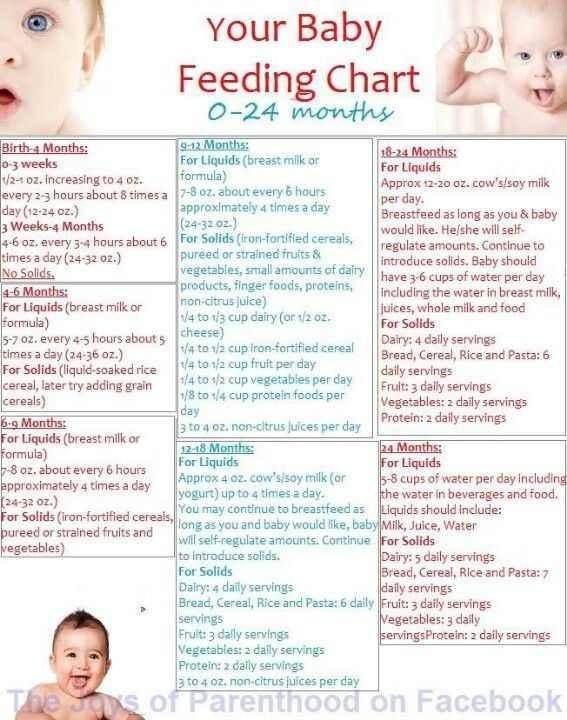 You'll become familiar with their cues and needs, and knowing when and how much to feed them will be much easier.
You'll become familiar with their cues and needs, and knowing when and how much to feed them will be much easier.
Formula feeding chart by weight
During the first 4 to 6 months, when your baby isn't eating solid foods, here's a simple rule of thumb: Offer 2.5 ounces of formula per pound of body weight every 24 hours, with a maximum of about 32 ounces.
| Weight | Ounces of formula |
|---|---|
| 6 pounds | 15 fl oz every 24 hours |
| 7 pounds | 17.5 fl oz every 24 hours |
| 8 pounds | 20 fl oz every 24 hours |
| 9 pounds | 22.5 fl oz every 24 hours |
| 10 pounds | 25 fl oz every 24 hours |
| 11 pounds | 27.5 fl oz every 24 hours |
| 12 pounds | 30 fl oz every 24 hours |
These numbers aren't rigid rules. They offer a rough estimate for what your baby may need. Some babies will grow well while taking less than the recommended amount, while others consistently need more.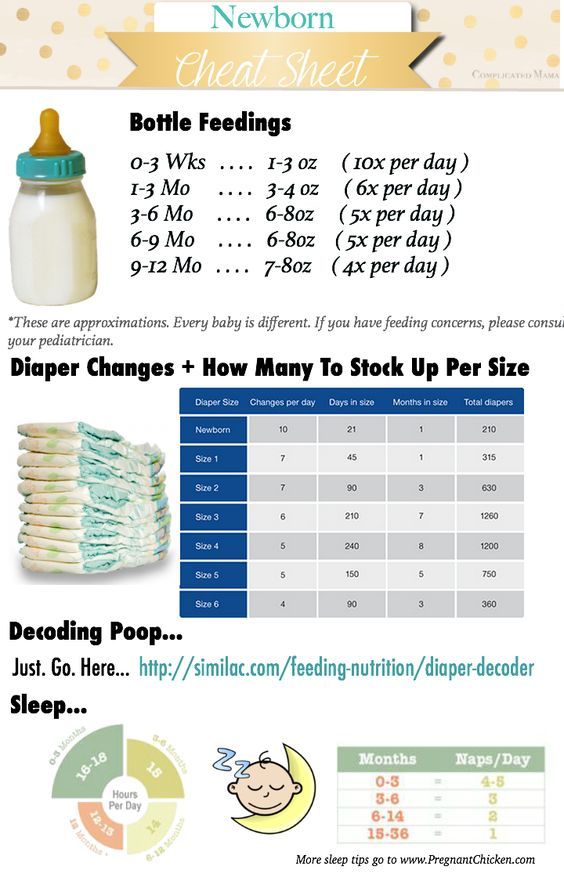 Your baby's daily feedings will also vary according to their individual needs – in other words, they may want a bit more on some days and a bit less on others.
Your baby's daily feedings will also vary according to their individual needs – in other words, they may want a bit more on some days and a bit less on others.
Formula feeding chart by age
Here are typical amounts per day based on age:
| Age | Ounces of formula |
|---|---|
| Full-term newborn | 2 ounces per bottle every 3 to 4 hours |
| 1 month old | 3 to 4 ounces per bottle every 3 to 4 hours |
| 2 month old | 4 to 5 ounces per bottle every 3 to 4 hours |
| 3 month old | 4 to 6 ounces per bottle every 3 to 4 hours |
| 4 month old | 4 to 6 ounces per bottle, 4 to 6 times a day |
| 5 month old | 4 to 6 ounces per bottle, 4 to 6 times a day |
| 6 month old | 6 to 8 ounces per bottle, 4 to 5 times a day |
| 7 month old | 6 to 8 ounces per bottle, 3 to 5 times a day |
From 8 months old until their first birthday, you can expect your baby to have 7 to 8 ounces per bottle, 3 to 4 times a day.
As your baby gets older – and their tummy gets bigger – they'll drink fewer bottles a day with more formula in each. It's important not to overfeed your baby so they'll stay at a healthy weight. Your baby shouldn't have more than 32 ounces of formula in 24 hours.
When they reach their first birthday, they can stop drinking formula and transition to cow's milk in a bottle, sippy cup, straw cup, or open cup. Limit your toddler to 16 to 24 ounces (2 to 2.5 cups) a day of whole milk, so they have room for other healthy foods.
Signs that your baby's getting enough formula
Here are signs that your baby's getting all the formula they need:
- Steady weight gain. They continue to gain weight after their first 10 days and follow a healthy growth curve during their first year. (Most babies lose up to 7 to 10 percent of their birth weight in the first few days and then regain it by the time they're about 2 weeks old.)
- Happy baby.
 They seem relaxed and satisfied after a feeding.
They seem relaxed and satisfied after a feeding. - Wet diapers. They wet two to three diapers a day in the first few days after birth. Over the next few days, the amount should increase to at least five to six wet diapers a day.
Signs your baby's getting too much formula
Babies are usually good at eating the amount they need, but bottle-fed babies can drink too much at times. Here are the signs that they're getting too much formula:
- Vomiting after a feeding may be a sign that your baby had too much. (Spitting up is normal, vomiting isn't.)
- Tummy pain after a feeding can also be a sign of overfeeding. If your baby draws up their legs or their tummy seems tense, they may be in pain. (See other possible reasons for stomach pain in babies.)
If your baby seems to want to eat all the time, even after finishing a bottle, talk to your pediatrician. Using a pacifier may help soothe their need to suck.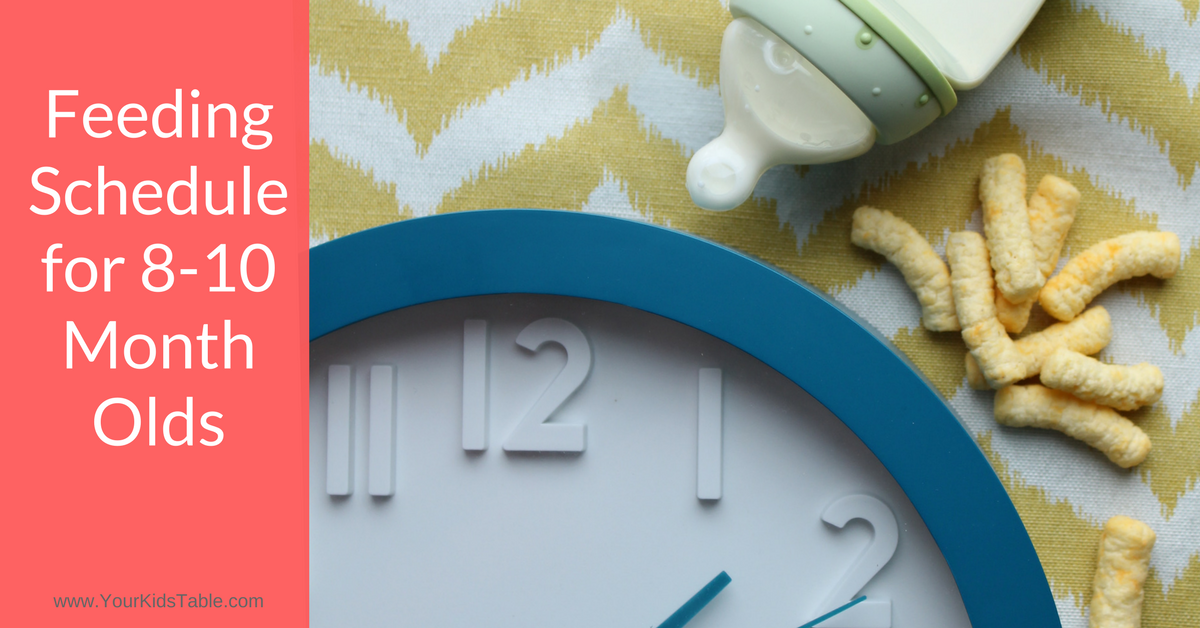
Formula-feeding tips
- In general, babies eat when they're hungry and stop when they're full, so resist the temptation to encourage your baby to finish each bottle. Overfeeding during infancy can contribute to obesity later in life.
- Don't respond to your baby's every cry with a bottle. They may be crying because their diaper is wet, they're cold or hot, they need to be burped, or they want to be close to you. (Learn more about why babies cry, and how to soothe them.)
- Your baby may be hungrier than usual during growth spurts. These typically occur 10 to 14 days after birth and around 3 weeks, 6 weeks, 3 months, and 6 months of age.
Read more:
- Formula Feeding Problem Solver
- How to safely store and use formula
advertisement | page continues below
Diet for an 8-month-old baby
In the ninth month, fish can be introduced into the diet of children. Along with animal meat, fish is a source of complete protein with a well-balanced composition of amino acids, fat, vitamins B2, B12 and minerals. Compared to meat, fish contains 5 times less connective tissue, due to which it is quickly boiled soft, has a delicate texture after heat treatment and is easier to digest. Fish oil is characterized by a high content of polyunsaturated fatty acids, including the ω-3 class. These substances are necessary for the child to mature the brain, retina, strengthen the cardiovascular and immune systems. Sea fish contains such important trace elements for the child's body as iodine and fluorine. The child should be given 1-2 times a week instead of meat, be sure to monitor how the child tolerates fish in general and its individual varieties. Preference should be given to oceanic fish, preferably white (cod, hake, pollock), red salmon can be recommended, river pike perch, carp.
Compared to meat, fish contains 5 times less connective tissue, due to which it is quickly boiled soft, has a delicate texture after heat treatment and is easier to digest. Fish oil is characterized by a high content of polyunsaturated fatty acids, including the ω-3 class. These substances are necessary for the child to mature the brain, retina, strengthen the cardiovascular and immune systems. Sea fish contains such important trace elements for the child's body as iodine and fluorine. The child should be given 1-2 times a week instead of meat, be sure to monitor how the child tolerates fish in general and its individual varieties. Preference should be given to oceanic fish, preferably white (cod, hake, pollock), red salmon can be recommended, river pike perch, carp.
Self-cooked fish is given to a child with boiled and mashed vegetables. You can also offer your baby fish and vegetable canned food, but they contain only 10 - 20% of fish.
At this age, when all the main food groups have already been introduced, special attention should be paid to the diversity of the composition of dishes. New, possibly combined products are introduced, for example, not only purees from various fruits and berries, but also their combinations with cottage cheese, cream, cereals, etc.
New, possibly combined products are introduced, for example, not only purees from various fruits and berries, but also their combinations with cottage cheese, cream, cereals, etc.
From the age of 8 months, the child's diet can be expanded to include fermented milk products (baby kefir, biokefir, bifidokefir, yogurt, bioyogurt, biolact). Fermented milk products are prepared using a special starter culture that breaks down milk protein, so that the baby can get an indispensable set of amino acids in a well-available form. Fermented milk products improve the composition of the intestinal microflora of the child, are rich in B vitamins and calcium. Their regular use favorably affects the functioning of the intestines, stimulates appetite, and increases the absorption of micronutrients. Children's dairy products are introduced into the baby's diet gradually, starting with 1 tsp. and with good tolerance increase their volume to 150-200 ml per day.
Sample menu for a healthy baby 8 months
| I feeding 6 hours | Breast milk or infant formula | 200 ml |
| II feeding 10 hours | Dairy-free* or milk porridge Butter Boiled egg yolk Fruit puree Fruit juice | 180 g |
| III feeding 14 hours | Vegetable puree Vegetable oil Meat puree Fruit juice | 170 g 1/2 tsp 50 g 50 ml |
| IV feeding 18 hours | Cottage cheese Baby biscuits Fruit puree Supplementation with breast milk or baby kefir/yogurt | 40 g |
| V feeding 22 hours | Breast milk or infant formula | 200 ml |
* - diluted with breast milk, infant formula or water
Approximate daily ration for an 8 month old baby allergic to cow's milk proteins
| I feeding 6 hours | Breast milk or formula for children allergic to cow's milk proteins | 200 ml |
| II feeding 10 o'clock | Dairy-free* porridge Vegetable oil Fruit puree (apple, pear) | 120 g 1 tsp 80 g |
| III feeding 14 hours | Vegetable puree Vegetable oil Meat puree | 170 g 1 tsp 40 g |
| IV feeding 18 hours | Vegetable puree or porridge Vegetable oil Meat puree | 170 g 1 tsp 30 g |
| V feeding 22 hours | Breast milk or formula for children allergic to cow's milk proteins | 200 ml |
* — is diluted with breast milk or formula for children with allergies to cow's milk proteins
Complementary foods at 8 months - Encyclopedia Baby food period of independence, when the child shows a desire to feed himself! This article provides information on complementary foods for children from 8 months of age.

Baby most likely weighs about 8.3 kg at 8 months and is now able to eat some small solid foods. A couple of months ago, the child got rid of the tongue pushing reflex, food is no longer pushed out of the mouth by the tongue. The child can sit independently in the highchair, so you can feed the baby at the common table.
Breast milk continues to be the main source of infant nutrition. However, at the same time, the baby can eat adult food 2-3 times a day. At this stage of development, the baby needs complementary foods as an additional source of energy and nutrients, since the baby’s motor and mental activity has increased significantly at 8 months.
It should be taken into account that the feeding regimen during breastfeeding may change, because during the day the baby is busy exploring the world around him, so he can simply forget about breast milk, but at the same time, night feedings can increase up to 6 times. With IV, there can be up to 4 feedings with milk formula, not counting complementary foods.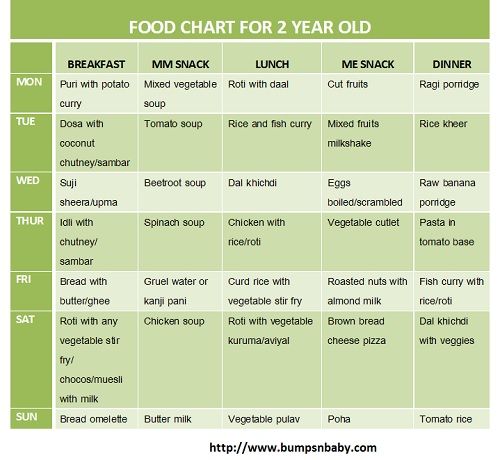
Contents:
At this age, the baby begins to show a lot of independence, he wants to drink from a cup without his mother's help, while holding it with both hands. Most children at 8 months like to study food slowly and thoroughly, and they are interested in food not only in his plate, but also the neighboring one. Their cognitive interest can lead to rubbing applesauce on the table or throwing food on the floor, and moms remember that the spreading liquid is a very interesting sight for a little inquisitive baby. And to treat mom with an apple is another exciting activity.
The child has just learned to take small pieces of vegetables between the thumb and forefinger, and transfer them to the mouth, and then chew them all. Sometimes all this can be annoying, because the actions of a child bring disorder and dirt into our measured adult life. However, this is an important step in the development of the baby, which allows them to learn and fills them with energy. It is best at this stage for the child to eat with all family members so that he clearly remembers the rules of cultural behavior at the table, remember that your behavior will be copied and shown in all its glory a little later.
Most likely at 8 months the baby has about 4 teeth, but maybe not one or more, do not be upset if they are not, this is normal. If there are teeth, the baby can eat finely chopped food, as we wrote earlier, pureed food is offered to babies at 7-9 months. However, already at 8 months they can be offered pieces of soft baby biscuits, apples or boiled carrots, on which the baby learns to chew and bite. You can read more about finger food here.
Complementary foods at 8 months: What to feed???
Weaning at 8 months is a good time to continue introducing new foods in addition to breast milk or formula. As a finger food, you can enter soft baby biscuits, drying or crackers. At 8 months, you can cook vegetable soups from potatoes, zucchini, carrots, etc. You can add onion, garlic, dill or parsley to the soup, we remind you, only after the gradual introduction of these products into the baby's diet (the waiting rule is 4-7 days).
We continue to feed the child in the morning with dairy-free cereals, there is already a large selection - buckwheat, rice, corn, oatmeal, quinoa is possible. Closer to 7-8 months, if all these cereals are introduced into the baby's diet, you can cook multi-cereal cereals, mix 2-3 types of cereals and offer the child. Perhaps he has already formed his own taste and favorite porridge.
Please note that you should not go on about the crumbs, if he refuses to eat this or that product. You should offer a new product more than 20 times, with short breaks, i.e. offered - refusal, after 10-14 days we offer again and so on up to 20 times. Yes, the child’s addiction to new foods may take longer, but he will eat everything.
Meat food at 8 months
Most paediatricians advise introducing meat into baby food at eight months. But do not rush into this, it is considered the norm to introduce meat into the diet of a child of 8-10 months. So it is not necessary to introduce meat products on the day when the baby is 8 months old.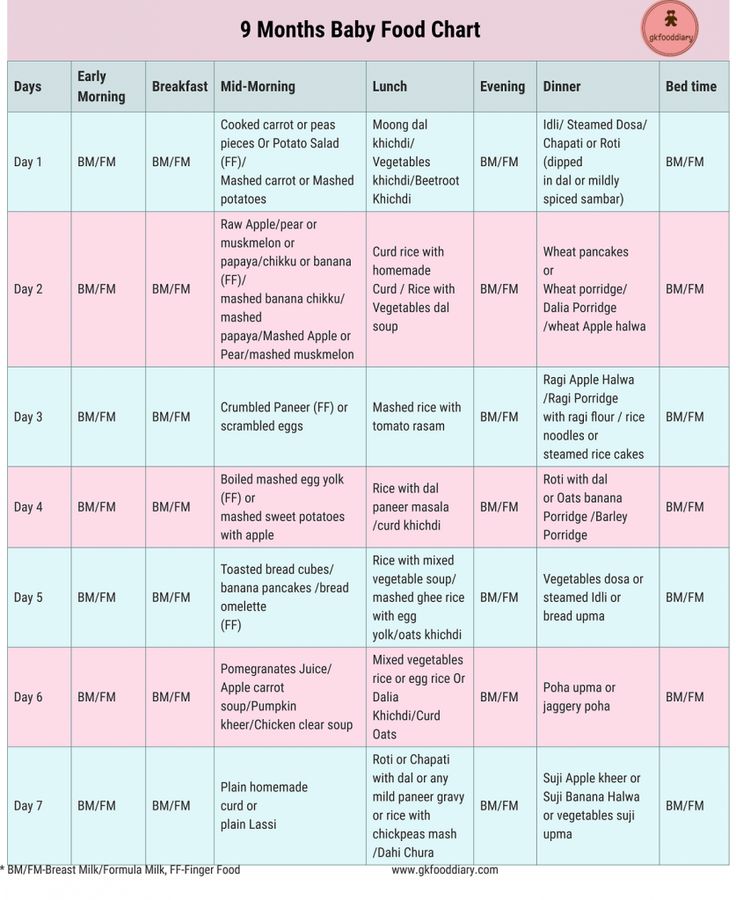 Usually, meat supplements at 8 months start with rabbit or turkey, but you can start with lean beef.
Usually, meat supplements at 8 months start with rabbit or turkey, but you can start with lean beef.
The main thing for preparing meat puree is not to use the meat broth in which the meat was cooked. And also remember that the secondary broth is always used, do not worry, the baby will receive all the elements he needs, which will remain in the meat puree.
Meat puree is usually served with vegetables or porridge. The first meat complementary foods will be equal to 1 teaspoon, then every day we increase the meat complementary foods and reduce the vegetable ones, we wrote here about replacing the first complementary foods with the second. We bring the meat to 30 grams, if the baby eats less, do not be discouraged, this happens.
Complementary foods at 8 months
Complementary foods at 8 months are also supplemented with kefir, but most pediatricians currently advise waiting up to 12 months for its introduction. However, if you decide to introduce kefir into your diet, then we remind you that it does not belong to complementary foods, as it is rather a drink, because it is not thick. They offer kefir to the baby, as usual we introduce a new product, gradually bring it up to 200 ml. Many mothers with children on IV replace the last feeding with kefir or another fermented milk product.
They offer kefir to the baby, as usual we introduce a new product, gradually bring it up to 200 ml. Many mothers with children on IV replace the last feeding with kefir or another fermented milk product.
However, it is necessary to warn that fermented milk products have a negative effect on tooth enamel, I do not dissuade you from feeding your child with kefir or yogurt, they are very useful, just after this meal the child should be given water to drink or brush his teeth. And of course, it is best to replace nightly dairy (for example, milk) and sour-milk feedings with water. I understand it is difficult, but in 2-3 weeks of your stoic “no”, the child will get used to not eating at night. Again, I am writing about children who have completely switched to complementary foods. If you are formula feeding or breastfeeding, then feed for health at night.
Fruit food at 8 months
From fruit you can add banana, peaches, apricots and blueberries. At first, we give a boiled banana, then after the child has adapted, you can give it fresh.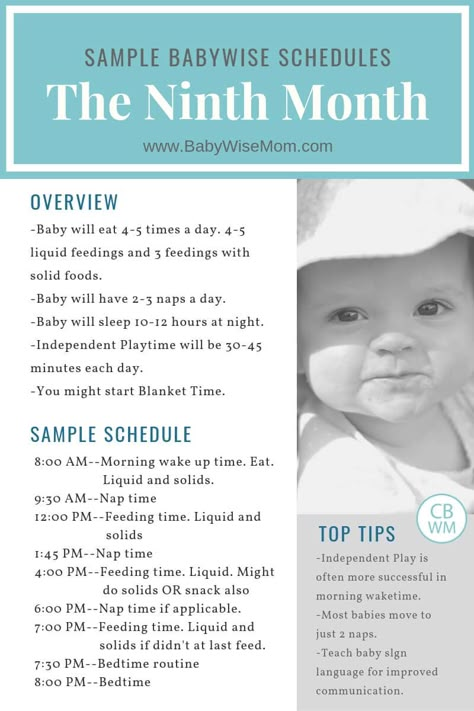 With a banana, carefully so that the child does not choke. Do not leave your child unattended when eating new foods.
With a banana, carefully so that the child does not choke. Do not leave your child unattended when eating new foods.
You can also use canned mashed potatoes, and many parents choose the option of mashed meat from a can, as it can be difficult to make such a puree as in a store at home, the meat has fibers and a blender sometimes does not help much to achieve a homogeneous consistency. And banana puree can be offered canned for the first time, so as not to suffer with its preparation.
Feeding a baby at 8 months: Schedule
Usually for breastfeeding and IV the feeding regimen is the same, the number of feedings is only 5, and the interval between feedings is 4 hours. The approximate amount of food for one feeding is 230 grams, but it all depends on the child. Complementary foods at 8 months are given 2-3 times a day.
Feeding a baby at 8 months: Norms
The table shows the approximate norms of food consumption at one meal. Your child is a special person, so you should not equate him with the framework. The baby can eat more than the following norms, or vice versa, much less. Sometimes they eat a lot one day, and the next day they don’t eat at all, they only drink water.
Your child is a special person, so you should not equate him with the framework. The baby can eat more than the following norms, or vice versa, much less. Sometimes they eat a lot one day, and the next day they don’t eat at all, they only drink water.
Therefore, you should not force the child, this table offers the mother the option of cooking in a given amount, although, most likely, by 8 months, parents already know approximately how much their baby eats. We also draw your attention to the fact that children on breastfeeding can eat less than the indicated norms, as they know for sure that later they will receive tasty and healthy mother's milk. So my son ate only 100 grams of vegetable puree with 30 grams of meat and washed everything down perfectly with breast milk, such a dinner suited him.
Feeding a baby at 8 months: Rules of behavior at the table
A child's intelligence is rapidly growing by 8 months, so it is necessary to teach him to observe certain rules at the table. At seven months, we gave the baby a spoon, but he played with it more than he used it, but there are already results, right? At 8 months, you can wash your hands before eating, laying the foundations of etiquette. Be sure to monitor the cleanliness of children's dishes so that the baby gets used to cleanliness from an early age. And we also make sure that the baby eats in a calm environment without books and toys.
At seven months, we gave the baby a spoon, but he played with it more than he used it, but there are already results, right? At 8 months, you can wash your hands before eating, laying the foundations of etiquette. Be sure to monitor the cleanliness of children's dishes so that the baby gets used to cleanliness from an early age. And we also make sure that the baby eats in a calm environment without books and toys.
He must separate play and feeding times. Accordingly, no watching TV or the Internet while feeding the baby. The attention of the family at the table completely belongs to the food on the plate, we teach the child to eat with the family, in a quiet conversation, to enjoy delicious food and communication.
We remind you that food for a baby at 8 months is an additional source of energy and nutrients, so be careful not to make food a cure for baby crying . If a child has acquired this habit from the first months of his life, then this can lead to excess body weight, which is very difficult to remove later.
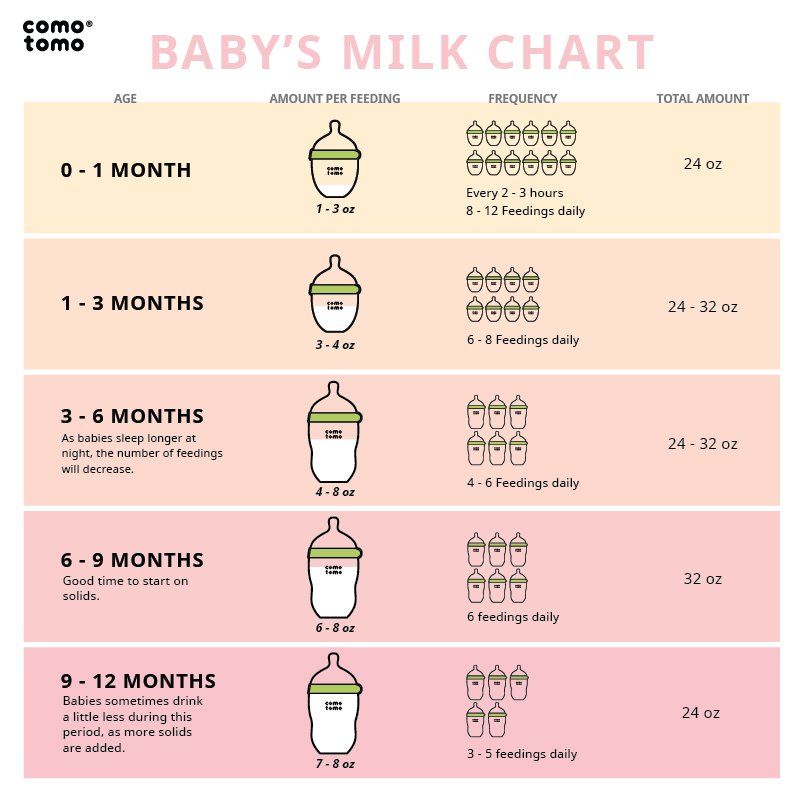
Complementary foods at 8 months : Water
By 8 months the child is consciously interested in water, if earlier he could still refuse water, now, most likely, he reaches for a cup on his own, but not in an attempt to drink water, he just copies his mother's actions. A child on breastfeeding practically does not drink water, as he receives enough liquid from breast milk, but still, water is offered in a cup between feedings.
In hot weather, breastfeed your baby more often if he absolutely refuses to drink water. A child on IV drinks water almost from birth, so we continue to offer to drink from a cup. There are no norms for the volume of water, a child can drink from 100 to 300 ml of water per day, the main thing is not to force him to drink water, often offer, set a positive example.
Feeding a baby at 8 months: Ideas
Complementary foods at 8 months are very diverse, as a huge number of new products have been introduced into his diet, you can combine them, combine and give your baby a lot of unforgettable taste experiences. Below are examples of children's recipes. We continue to feed the baby with his favorite dishes, and add new recipes to our piggy bank.
Below are examples of children's recipes. We continue to feed the baby with his favorite dishes, and add new recipes to our piggy bank.
- Porridge:
- Rice (and/or buckwheat, corn) porridge with a banana (cereal 100 grams, fruit 80 grams)
- Rice 9011 9016 (and cup Porridge with a peach
- rice (and/or buckwheat, corn) Porridge with apricot
- Rice (and/or buckwheat) Porridge with blueberries 9016 9011 9016 , corn) Porridge with peach and apricot
- rice (and/or buckwheat, corn) Porridge with peach and apricot
- Rice (and/or buckwheat, corn) cere
- Rice (and/or buckwheat, corn) porridge with rabbit ( and/or turkey, lean beef)
- Rice, corn) ()0280
- Vegetable soup of broccoli, carrots, onions, parsley
- Vegetable soup of carrots and pumpkin
- Vegetable soup of potatoes, pumpkin, onions, parsley, zucchini
- Rabbit soup
and/or turkey, low -fat beef) with onions and carrots - Soup from rabbit ( and/or turkey beef) from Brockeli, carrots and onions of
- 0003
We are not afraid and add me to VK and Odnoklassniki, Instagram!
Like this article? Subscribe to site updates
"Encyclopedia Baby Food"!
Don't forget to bookmark us! (CTRL+SHIFT+D) Subscribe to the site, comment, share in social networks.

On our site Encyclopedia Baby Food there is useful information on the nutrition of your children, which is useful for everyone, and we update the site "Encyclopedia Baby Food" constantly and try to search and write only excellent, verified and necessary information for you and your children.
Disclaimer No. 1: It must be understood that the author of the articles on the Baby Food Encyclopedia website is not a medical staff, “I am not a doctor.” The information I share is based on my own experience. My goal is not to teach you how to eat or feed your child, but to talk about how we did it, what new things I learned or read. This expands the picture of Baby Food knowledge, gives you a glimpse of the whole process so you can decide if you like it or not.
Disclaimer No. 2 : However, the above does not cancel visiting a pediatrician. Before you start complementary foods, you need to get his professional opinion on the best way to introduce new foods for your baby.
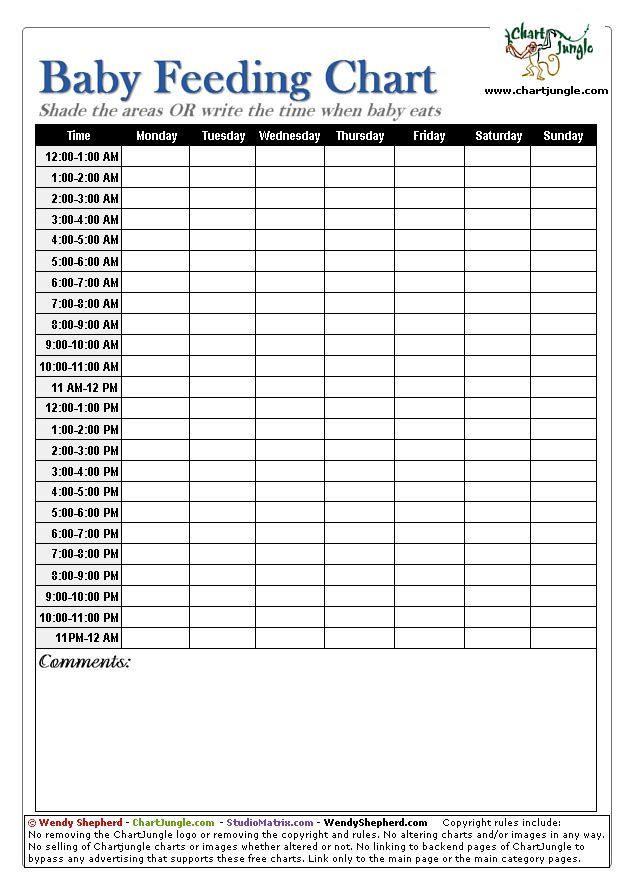 I also draw your attention to the fact that you need to look at the original date of the published articles, because some of the "best practices" may have changed. Always check with your child's pediatrician about complementary foods and their health.
I also draw your attention to the fact that you need to look at the original date of the published articles, because some of the "best practices" may have changed. Always check with your child's pediatrician about complementary foods and their health. Disclaimer #3: Keep in mind that every family is unique, every situation is also completely unique. There are no universal solutions. Only you can find what works best for you. Certain goals require certain sacrifices and priorities - not everyone wants to make those choices, and that's GREAT! Just know what you want to achieve, and be ready to get to work, putting the best of your strength!
Disclaimer No. 4: On the Encyclopedia Baby Food website, photos from books on baby food with attribution are used to better understand the information (Article 1274, Clause 1, Part Four of the Civil Code of the Russian Federation). Literature on baby food is found in the public domain on the Internet.

- 0003

